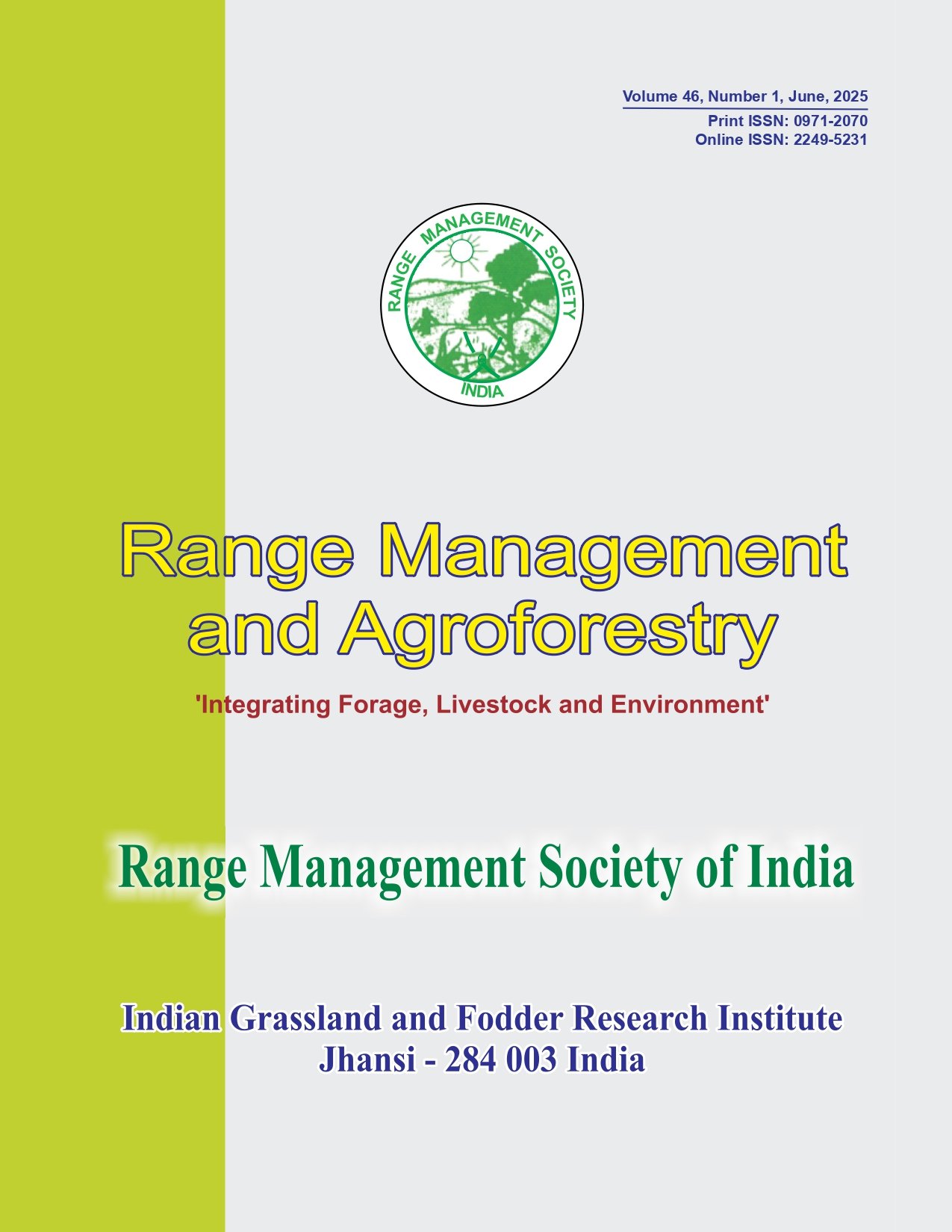Propensity of diversified Avena for potential yield attributes under abiding analogous weather conditions
Keywords:
Fodder crops, Global warming, Green fodder yield, Morphological traits, Night temperatureAbstract
The prime objective of the present research was to analyse the changes incurred by meteorological parameters (temperature and humidity) over 15 years on the growth, phenology and yield attributes of 277 geographically diverse germplasm lines of oat in central Indian conditions. Analysis showed that night period was warming to a greater extent (during 2015-16 compared to 1999-2000) when compared to daytime. Also, the ancillary traits of Avena, such as days to 50% flowering (17.92%), plant height (10.42%), and number of leaves plant-1 (6.36%) improved, while the tiller number hill-1 (-61.42%), stem girth (-20.69%), internode length (-17.17%) and flag leaf width (-10.11%) have pessimistic consequences with the current prevailing weather conditions. Similarly a comparative evaluation of geographically diverse accessions showed that Brazilian accessions were more adapted to tropical conditions as compared to USA and Indian accessions, and showed improved green fodder yield (GFY) by 13.74%. The USA accessions faced a severe challenge to combat climate warming at crucial phenological stages and the GFY was reduced by 26.72% under similar growing conditions. The study concluded that selection of climate-smart/climate resilient accessions/germplasm lines and breeding for such superior morphological traits could alleviate the severe effect of global warming up to a certain extent.




